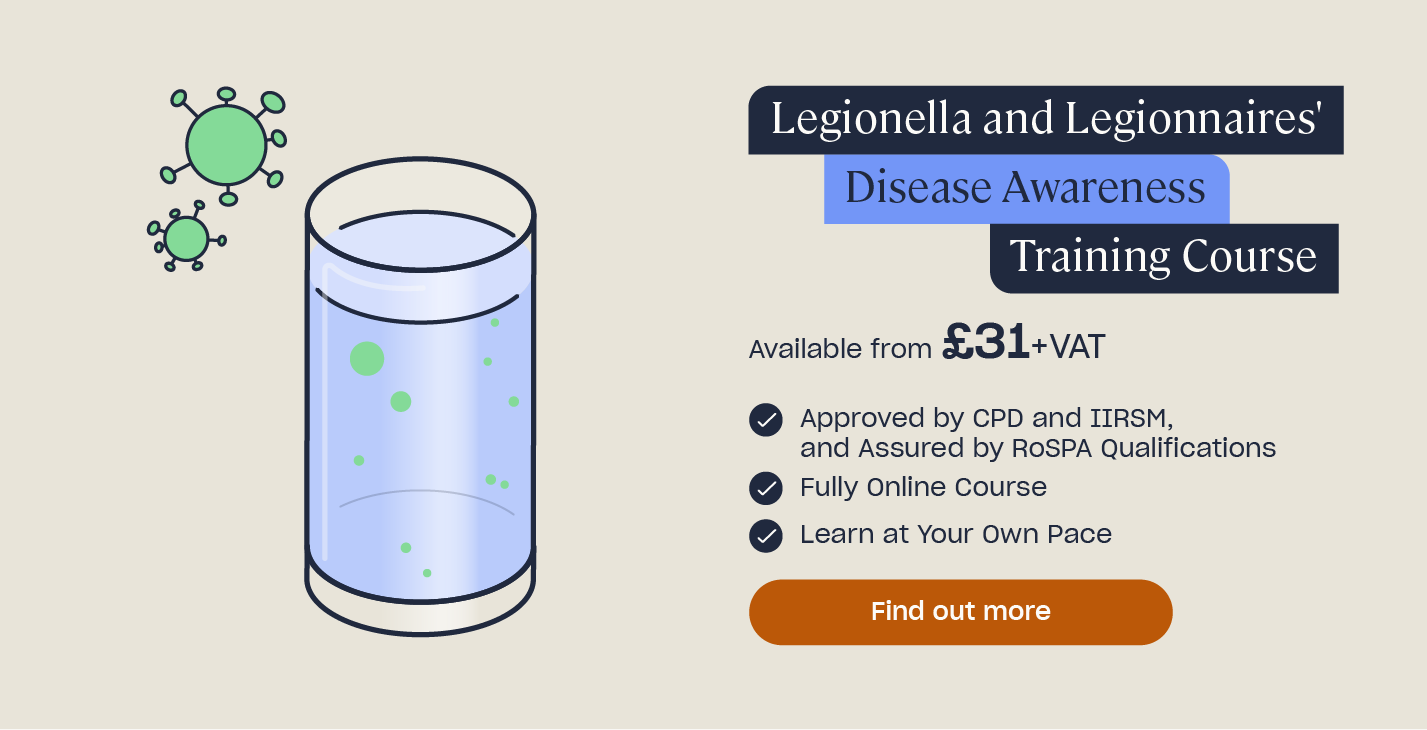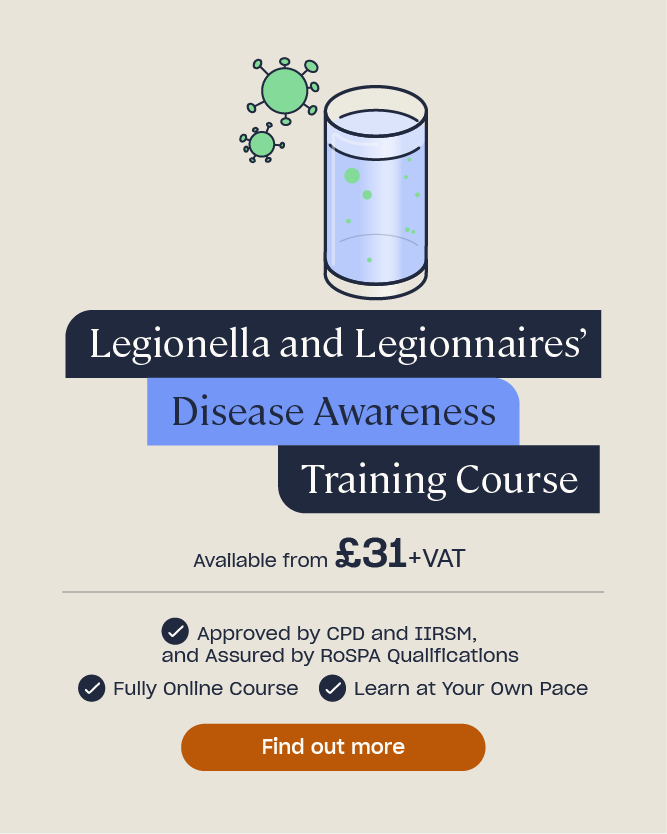How to Clean Stagnant Water: Guidance on Managing Legionella Bacteria
If you’re an employer, someone in control of premises (such as a landlord), or self-employed, you have a responsibility to ensure that workplace risks are controlled so that they don’t compromise anyone’s health and safety. Stagnant water is one of these risks that needs managing as it may cause people to contract Legionnaires’ disease. It is important to consider and manage this danger to prevent anyone from getting ill, especially if the premises are closed for any length of time or where the systems are used less frequently than usual.
This article will focus on water supplies that are stored and used in buildings for various purposes and how they should be treated to be made safe.
What is Stagnant Water & What Causes it?
Stagnant water is water that sits in place for hours or longer with little or no movement. The phrase can be used to describe bodies of water that have stopped flowing, such as rivers, as well as water that is contained in systems within buildings. For example, most buildings will have a constant, ready stream of water that may be used for drinking, washing, bathing and/or air conditioning. If these supplies aren’t properly monitored or aren’t used for a period of time, the water can become stagnant, causing harmful bacteria to multiply.
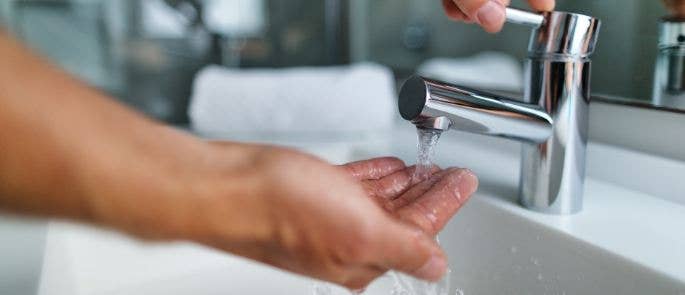
Sometimes, you can identify stagnant water by the smell it gives off. However, just because there is no smell does not mean that the water isn’t stagnant and that harmful bacteria such as Legionella is not present. As a landlord or employer in control of premises, you are responsible for ensuring water supplies haven’t become stagnant and don’t pose a risk to human health.
Many workplaces may be used less frequently due to increased numbers of people working remotely. It is especially important to consider the risk of stagnant water in workplace systems upon reopening premises, or when considering what increased measures may be required to maintain the system in light of the reduced usage.
What are the Risks of Stagnant Water?
Where buildings have been closed or systems have been used less than normal, water supplies may have potentially been sitting in pipes and water systems in unoccupied buildings without any use. Due to the water being stagnant, serious risks to health and safety can arise. The main risk is to human health, which you have a legal responsibility to manage and reduce as a duty holder. You must consider whether there’s an increase in the bacterium Legionella pneumophila and other related bacteria that can thrive in purpose-built water systems, particularly when water is stagnant.
People contract Legionnaires’ disease through the inhalation of small water droplets that contain the bacteria. For example, this could be done by someone washing their hands in a restaurant bathroom sink who inhales the small droplets unknowingly, or someone who rinses vegetables under a tap before eating them. Once this bacteria has multiplied, it can make those who then come into contact with the water supplies seriously ill. A form of pneumonia, Legionnaires’ disease can be potentially fatal.
You can find out more about the disease in our article Symptoms and Treatment of Legionella and Legionnaires’ Disease.

In addition, there is a risk of water supplies being contaminated with heavy metals from the piping, which can also cause people to fall ill. If your premises has lead piping, then there’s a risk of lead poisoning with symptoms including headaches, abdominal pain and nausea. However, this type of piping is only likely to be present in buildings with systems pre-dating the 1970s, and many lead water pipes have since been replaced.
What are My Responsibilities to Control Legionella Bacteria in Water Systems?
If you are an employer, self-employed person, or someone in control of premises, such as a landlord, you have a duty to identify and control risks associated with Legionella. This is a legal requirement under general health and safety law including the Health and Safety at Work, etc. Act 1974 and the Management of Health and Safety at Work Regulations 1999 (MHSWR).
In addition, the Control of Substances Hazardous to Health Regulations 2002 (COSHH) provides a framework of actions explaining how to assess, prevent or control the risk of bacteria such as Legionella. You need to take suitable precautions to prevent or control the risk of people being exposed to Legionella to protect their health and safety. The specific people at risk will depend on the building and its use, but may include employees, tenants, customers, patients, and/or other members of the public.
For more information on how to carry out a Legionella risk assessment, our article on Legionella Control may be of use.
How to Clean Stagnant Water
While you may be able to safely maintain some water and air conditioning systems yourself, it is likely that you will have to employ a qualified specialist to come to your premises and routinely check, inspect and clean most systems. You may also rely on a competent person or specialist to assist you with identifying and implementing controls. If you are unable to clean stagnant water yourself, you have a responsibility to ensure that someone who is competent does it on your behalf.
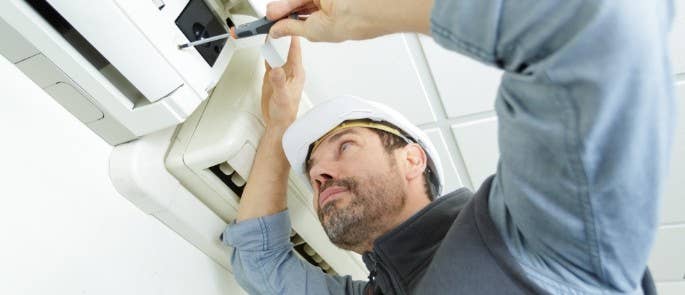
There are, however, some steps that you can take yourself to help reduce the negative impact of stagnant water. Although you may not be carrying out deep cleans yourself, you still need to know what treatment and maintenance your water systems require. You should also be aware that the person performing these cleaning duties may require personal protective equipment (PPE), particularly respiratory protective equipment (RPE). It may be your responsibility to provide this protective equipment to ensure their health and safety isn’t compromised.
We have listed the steps that must be taken to clean, as well as prevent, stagnant water, for the most common types of water supplies below.
Hot and Cold Outlets
Hot and cold water outlets, such as taps and shower heads, must be flushed out weekly if they are used infrequently. If this hasn’t been possible, you must arrange for a qualified specialist to come in and perform a deep clean. This will likely include the water system undergoing a more thorough flushing and disinfection process if the building has been closed for a period of time, or if the facilities are being used less frequently than normal.
Air Conditioning
Some types of air conditioning units have a source of water, which can result in the Legionella risks that we have outlined here. If you have air conditioning systems that have gone through a period of disuse or have been used infrequently, you need to assess the legionella risk before putting it into use again. It is most likely that larger units will pose this risk if they contain areas where bacteria can thrive, such as in humidifier or evaporative sections, or condensate trays where water can stagnate. Smaller units with a closed cooling system shouldn’t present this risk, but you should still carry out an assessment to ensure this is the case.
During your review of your risk assessment, you may determine that your air conditioning units need to be thoroughly cleaned due to a period of not being used, or being used less frequently.
Commercial Spa Pools and Hot Tubs
If commercial spa pools and hot tubs are used regularly, you should maintain the existing control measures and procedures that you have put in place. If they have been out of use, then you must ensure that they are drained, cleaned and disinfected correctly. The process of cleaning and disinfecting the spa pool or hot tub and surrounding area should be repeated before they are used.
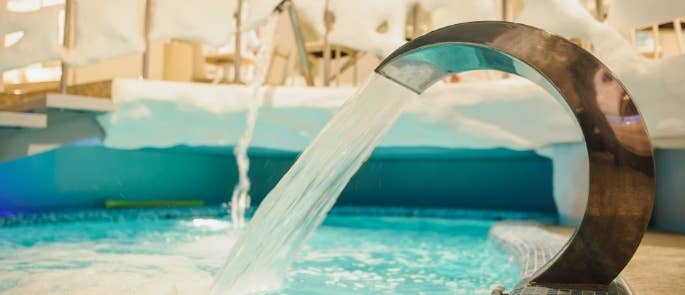
Cooling Towers and Evaporative Condensers
If cooling towers or evaporative condensers are installed and have been out of use for up to one month, you should isolate the fans and use a biocidal treatment in the system for a minimum of an hour every week. If they have been out of use for longer than this, you must ensure that the systems are drained, cleaned and disinfected before use. The process of cleaning and disinfection should be repeated before they are then refilled and used.
As a duty holder, you have legal responsibilities under several health and safety laws to manage the risks caused by stagnant water, including Legionnaires’ disease.
Further Resources:
- Legionella and Legionnaires’ Disease Awareness Training Course
- What is ACOP L8 and How Does it Apply to Legionella?
- Symptoms and Treatment of Legionella and Legionnaires’ Disease


